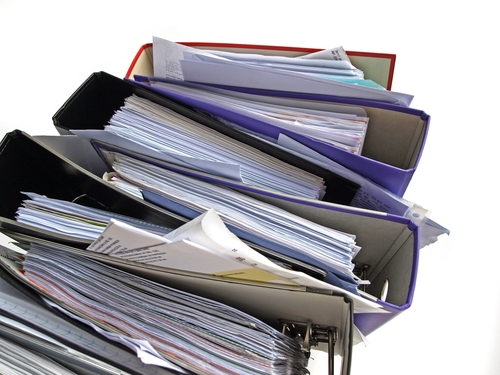Entering the new year is like hitting a grand refresh button, granting people and their businesses a sort of psychological reprieve to rethink their situations and strategies and overhaul old, inefficient practices. In essence, the new year is a chance to reorganize or, for many, an opportunity to get organized in the first place.
As companies march into another year, however, they are often bombarded with new ways to structure their schedules, priorities and even hierarchies. Cloud-computing is the new way to organize data, while predictive metrics may become an essential means of recruiting, according to Ere.net. However, getting organized doesn’t always have to be so technologically focused, nor does it need to be so sophisticated. Rather businesses in the 21st century might prosper better if they learn to utilize both low-tech and high-tech means of organization, starting, of course, with a calendar.
Keep it simple
Inc. Magazine recently gave readers 6 tips for getting organized, one of them being to clean up their workspace. A cluttered work area makes it harder to find necessary documents and can also just be distracting while one works. Some may take this as an invitation to completely clear off their desks with one sweeping gesture of their arms and switch into entirely digital workspaces. While this can make for a very Spartan and organized desk, workers may want to hold onto their calendars. Having a physical calendar on hand may be a great way to better visualize and internalize your schedules and goals.
A study from the University of Stavanger’s Reading Centre from a few years ago found that different parts of the brain are activated when reading letters learned through handwriting as opposed to learning through typing on a keyboard. According to the study’s press release, this could suggest that the learning process is affected in different ways when typing or writing by hand. While more research is needed to justify these claims, people’s own anecdotal experiences could help determine whether writing out their own schedule helps them better visualize their day on a person-by-person basis. A pocket calendar can be a good low-tech way to map out schedules on the daily commute, and the physical object could serve as a visual reminder of a renewed resolution to be diligent about planning efforts.
Go high-tech
It’s also important to know what Inc. Magazine also stated, “whether it’s an old-fashioned desk calendar or the latest synced-across-ten-devices app-based wonder, the key is to use it religiously.”
Physical personal calendars can be a helpful and inexpensive investment, but for businesses that have also already invested in high-tech smartphones and already have their calendar situation figured out, then there are also some organizational apps with which paper schedules just can’t compete. The last few years have seen a wave of app development that can be hard to sift through. However, Forbes and Business Insider have already located some of the best.
Businesses can benefit greatly from organizing their lines of communication. Basecamp is one of the most-used project management apps in startup circles according to Business Insider, allowing people to keep track of projects and coordinate among colleagues and clients. WhatsApp, according to Forbes, is a free group chat app that allows for paper trails, so that users can share logs, notes, photos and screenshots as they talk. When people need to find notes on a meeting, they just return to the app.
Organization isn’t just about trimming desks and inboxes of unnecessary materials, its also about learning how to better organize the influx of new information. Pocket, another app featured in Business Insider, lets users clip anything that might pique their interest on the Web and save for future inspiration.

